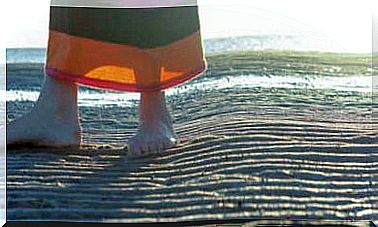Medicine Makes Female Differences Invisible
Diagnosis, treatment and research in medicine are conditioned by gender biases. Often the peculiarities of female physiology are not taken into account and the consequences are serious.

Women have different genetics, biology, physiology, endocrinology and psychology than men. We are different from men, but we are not unequal. All these variations have an impact on women’s health and psychology, that is why the conference “Women and health: same diseases, different consequences for men and women?”, Organized by the SFC-SQM Madrid Association, wanted to make visible the importance of medicine to solve many of the major health problems that women face today.
Women are supported by family, friends and female friends, and co-responsibility in sharing work with the partner. But we are depleted by the “external demands” for gender roles: double and triple shifts, our role as caregivers and discrimination and disadvantageous working conditions.
Women live longer, but with a poorer quality of life
Even the high values and high self-demands of many women or the education that favors low self-esteem add up in a cocktail that makes it easier for us to feel bad or cause the so-called “women’s discomforts”.
That is why women are sicker than men, but above all, we get sick in a different way, explains Dr. Mar Rodríguez Gimena, a specialist in gender medicine who recalls that although the life expectancy of women is almost 5 years more than of men, they are of poorer quality.
More prone to environmental diseases
We now know that environmental diseases affect women more than men. However, there is a lack of environmental policies that reflect this reality to prevent and recognize the causes that make us sick.
Stress, anxiety, menstrual disorder, musculoskeletal pain, overflowing pain and sometimes the “fibromyalgia”, with a 50% incidence in féminas- may be related to environmental factors such as exposure to chemicals in the home and work or chemical and electromagnetic pollution.
We accumulate more lean fat in the tissues
One reason why environmental diseases affect women more is because we accumulate more body fat than men. Many pollutants tend to accumulate in fatty tissue, consequently women concentrate more toxins, including some persistent and already prohibited such as DDT, still present in women over 40 years of age.
In addition, among the aforementioned toxins are endocrine disruptors, which are part of the composition of many household products (detergents, soaps, pesticides, plastics, organophosphates, overheated oils, Teflon …) and that cause hormonal alterations, since they act in a similar way female hormones.
Greater toxicity when there is anemia
This risk of environmental toxicity is greater in anemic women. The lack of iron causes a lack of hemoglobin that carries oxygen to the tissues. The reason is that the brain’s dopamine receptors are sensitive to ferritin, but if there is not enough, the blood-brain barrier is more affected, being more permeable to toxins, explains Dr. Mar Rodríguez Gimena.
Furthermore, MCS is related to the mitochondria and the Krebs cycle –related to cellular respiration– which also needs iron. A healthy value of ferritin in the blood is from 50 ng / ml because below the oxygenation function is not complete.
There are gender biases in medicine
There are a series of errors in biomedical research that cause the invisibility of many female problems, Rodríguez Gimena added. One of them is the gender stereotype.
“If a woman enters a consultation reporting that everything hurts, the possibility of being recommended a psychoactive drug is very high. If a man says it, he has a 50% chance that they will send him diagnostic tests ”, explains the specialist.
There are also biases in the research. Many study cohorts do not specifically consider women, so many of the conclusions, especially about treatments, are not actually tested on women.
The menstrual cycle, little studied
The normal menstrual cycle is an indicator of health and harmony. However, it is little studied and although today cycle disorders affect 10% of women (and are increasing), minimal effort is made to study them.
Bleeding a lot, having an irregular cycle or very painful menstruation means that there is a disorder in the endocrine axis, so “you cannot force a woman to hold on,” says Rodríguez Gimena. However, excessive bleeding affects more than 50% of women; the deficit of the second phase of the cycle, to almost 80%; menstrual syndrome 30%; fibrocystic mastopathy 60%; and fibroids, polycystic ovaries and endometriosis are growing.
Another major failure of medicine in relation to women is the “non-safety” of hormone replacement therapy, which can cause “serious side effects, such as breast cancer and stroke,” observes the doctor.
The female heart attack, different from the male
The symptoms of female heart attack, which is among the leading causes of death from cardiovascular disease along with breast cancer, are different as well.
Women suffer more chest pains and digestive symptoms, in addition to dizziness. Because of this lack of knowledge, women undergo fewer surgeries, fewer coronary angioplasties and less therapeutic reinforcement than men.
The thyroid problem, which predominates 50% more in women than in men, has also been made invisible, so thyroid hormone (TSH) and anemia should be monitored in consultation.









